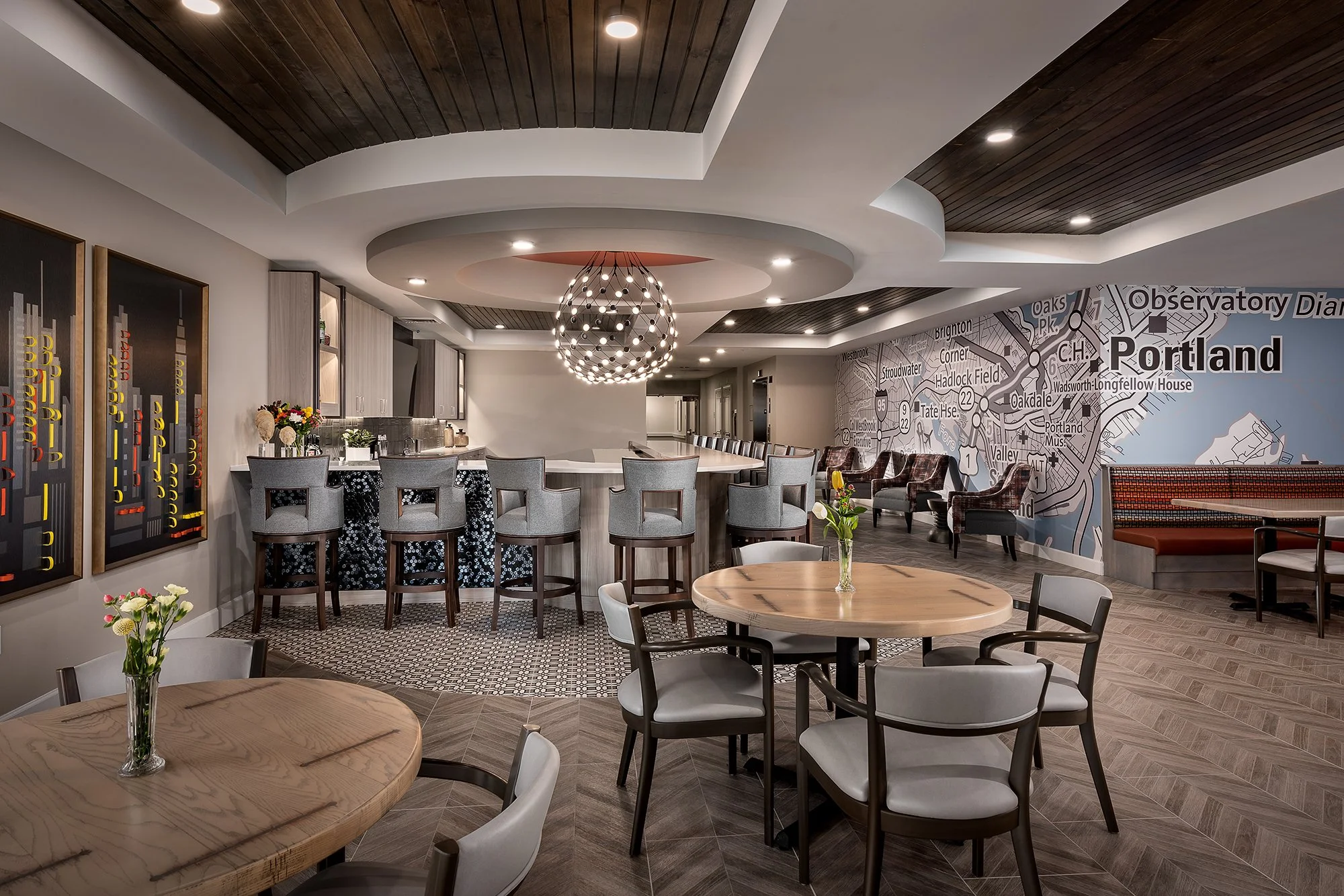Challenging Ageism Through Design
Ageism—discrimination based on age—often goes unnoticed, yet it shapes how we view older adults and, just as importantly, the spaces we create for them. On October 9th, the National Day of Ageism, we’re reminded that the environments we design carry powerful messages about dignity, vitality, and inclusion.
For senior-living communities, where design profoundly influences daily life, addressing ageism isn’t just an ethical imperative, it’s essential to resident well-being and the future of the senior living design industry.
The Human Impact of Ageist Environments
Ageism isn’t always obvious. Sometimes it’s built right into the places where we live, work, and gather.
Reduced Engagement and Well-Being: Spaces that feel clinical, outdated, or overly cautious can dampen residents’ motivation to socialize, stay active, or pursue hobbies—impacting both physical and mental health
Reinforced Stereotypes: Environments that prioritize safety above all else, while ignoring comfort and beauty, may unintentionally convey that residents are fragile or incapable.
Loss of Autonomy: Poorly considered layouts, confusing wayfinding, or inaccessible amenities can increase residents’ reliance on staff, reducing their sense of independence.
Generational Disconnect: Design that fails to reflect evolving tastes, particularly as younger generations begin to enter senior living—can create environments that feel out of step with residents’ expectations, further alienating them.
The consequences go beyond aesthetics. When spaces don’t feel vibrant, residents may retreat from common areas, increasing isolation and diminishing quality of life.
Ageism Within the Interior-Design Industry
The environments we see today often reflect decades of assumptions about aging. To move forward, we need to acknowledge where those assumptions came from.
Institutional Legacies: Early senior-living environments were often modeled after healthcare facilities, sterile, functional, and stripped of personality—rather than designed as homes that nurture well-being.
One-Size-Fits-All Thinking: Older adults were too often treated as a single, uniform population, with little consideration for diverse lifestyles, tastes, and abilities.
Underrepresentation: The voices of residents and often frontline staff were excluded from design decisions, perpetuating solutions that didn’t reflect real needs or aspirations.
These patterns reflect implicit biases that can make communities feel more like places to be managed than places to thrive.
Designing Against Ageism: From Problem to Solution
Addressing ageism requires a deliberate shift in how we approach design—one that respects aging as a natural, dynamic stage of life.
Inclusive, Universal Design
Solutions like intuitive wayfinding, ample natural light, acoustically balanced spaces, and ergonomic furnishings support people of all ages and abilities, without visually signaling “special needs.”
Elevate Style and Identity
Sophisticated palettes, contemporary art, curated FF&E selections, and meaningful ties to local culture help senior-living communities feel modern, vibrant, and desirable. When environments reflect the character and energy of boutique hospitality or upscale multifamily living, they challenge outdated stereotypes—showing that aging does not mean compromising style, comfort, or quality of life
Engagement-Focused Programming
Design should encourage social interaction, autonomy, and lifelong learning. Flexible amenity spaces that can evolve with residents’ interests, outdoor living areas for wellness, and small-scale “neighborhood” models for memory care all reflect a philosophy of empowerment rather than limitation.
Co-Create with Residents and Operators
Gathering insights from operators, community leaders, and market research ensures that designs reflect authentic needs and priorities from the very start. Bringing residents—and their families—into early planning conversations for renovations grounds decisions in real preferences and lived experiences. Collaboration with staff throughout both new-build and renovation projects helps align spaces with daily routines and care practices, ultimately enhancing dignity, comfort, and quality of life.






Looking Ahead: The Future of Age-Positive Design
The next generations of residents will expect senior-living communities to feel just as current and personalized as any other residential or hospitality setting. Meeting these expectations now not only combats ageism but also creates environments that attract and retain both residents and staff.
Ageism thrives in outdated assumptions. By replacing those assumptions with evidence-based, resident-centered, and aesthetically inspiring design, we can redefine what it means to age—and elevate the senior-living experience for generations to come.
A Commitment to Change
At Thoma-Holec Design, we believe design is more than aesthetics; it’s a statement of respect. Every finish, layout, and furnishing choice sends a message about how we value the people who inhabit the space.
On this National Day of Ageism, we reaffirm our commitment to design that challenges bias and celebrates the fullness of every stage of life. Together—with operators, developers, and residents themselves, we can create communities that prove aging is not a decline but an evolution, worthy of thoughtful and inspiring environments.
